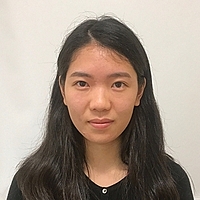Physics & Astronomy - Virtual PhD Thesis Defense - Hui Wang, Dartmouth
Title: "Using Superconducting Elements to Explore the Oscillatory Unruh Effect"
Abstract: Utilizing microwave superconducting cavities and other superconducting elements, we explore the effects of the voltage bias noise on the squeezing of macroscopic quantum microwave states, and propose analog and actual schemes to realize the oscillatory Unruh effect (UE). The UE predicts that an accelerated photodetector moving in free space vacuum would experience thermal, blackbody radiation at a temperature proportional to the detector's acceleration. In our two proposed analog schemes, we consider a single photodetector with the internal degree of freedom modeled as an oscillator and as a two level system (TLS), respectively. The photodetectors in each scheme are capacitively coupled to a confined microwave cavity mode, via the gigahertz frequency, "breathing" vibrational mode of a crystalline solid membrane structure called a ''film bulk acoustic resonator" (FBAR); the breathing mode of the FBAR enables a close analogue of the center of mass oscillatory acceleration of a photodetector. When the sum of the cavity and detector frequencies is in resonance with the FBAR breathing mode frequency, the resulting photon production rate from the vacuum is greatly enhanced. In our proposed scheme to realize the actual oscillatory UE, we consider N>>1 oscillating center of mass detectors modeled as TLSs that are coupled to the cavity mode. The cavity mode accelerating photodetector system maps onto a parametrically driven Dicke-type model and when the detector number N exceeds a critical value, the photon production undergoes a phase transition from a normal phase to a superradiant-like, inverted lasing phase in which the average photon number is significantly enhanced such as to be potentially measurable. As one possible realization, we consider a mechanical membrane with a dense concentration of nitrogen-vacancy (NV) center defects undergoing GHz flexural motion, and contained within a 3D, superconducting microwave cavity.
